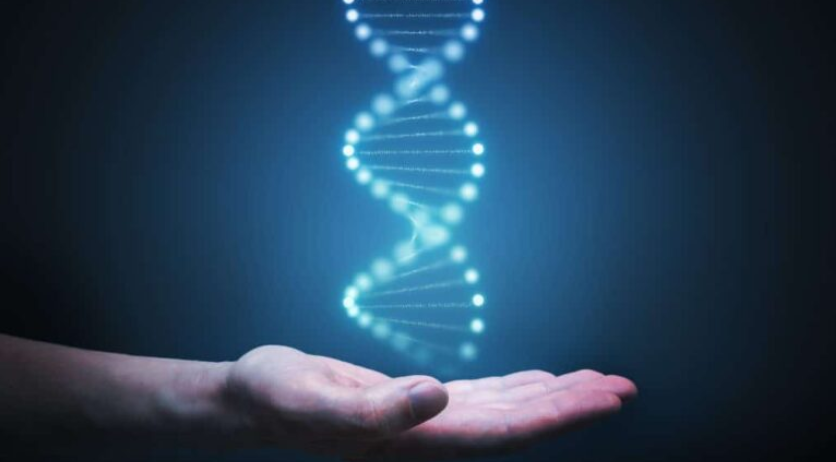 I have already detailed the plan to take over all genetic material on Earth that was hatched at the UNCED conference in Rio de Janeiro in 1992. “Designer Chromosomes” means a synthetically engineered free-for-all using material from different species. This is a huge breakthrough for the Evil Twins of Technocracy and Transhumanism. Evil, indeed.
I have already detailed the plan to take over all genetic material on Earth that was hatched at the UNCED conference in Rio de Janeiro in 1992. “Designer Chromosomes” means a synthetically engineered free-for-all using material from different species. This is a huge breakthrough for the Evil Twins of Technocracy and Transhumanism. Evil, indeed.
If you don’t listen to this video, then you are hiding your head in the sand. — Technocracy News & Trends Editor Patrick Wood
Scientists at the University of Pennsylvania’s Perelman School of Medicine have developed a new method to create human artificial chromosomes (HACs) that could revolutionize gene therapy and other biotechnology applications. The study, published in Science, describes an approach that efficiently forms single-copy HACs, bypassing a common hurdle that has hindered progress in this field for decades.
Artificial chromosomes are lab-made structures designed to mimic the function of natural chromosomes, the packaged bundles of DNA found in the cells of humans and other organisms. These synthetic constructs have the potential to serve as vehicles for delivering therapeutic genes or as tools for studying chromosome biology. However, previous attempts to create HACs have been plagued by a major issue: the DNA segments used to build them often link together in unpredictable ways, forming long, tangled chains with rearranged sequences.
The Penn Medicine team, led by Dr. Ben Black, sought to overcome this challenge by completely overhauling the approach to HAC design and delivery. “The HAC we built is very attractive for eventual deployment in biotechnology applications, for instance, where large-scale genetic engineering of cells is desired,” Dr. Black explains in a media release. “A bonus is that they exist alongside natural chromosomes without having to alter the natural chromosomes in the cell.”
To test their idea, the scientists turned to a tried-and-true workhorse of molecular biology: yeast. They used a technique called transformation-associated recombination (TAR) cloning to assemble a whopping 750 kilobase DNA construct in yeast cells. For context, that’s about 25 times larger than the constructs used in previous HAC studies. The construct contained DNA from both human and bacterial sources, as well as sequences to help seed the formation of the centromere.
The next challenge was to deliver this hefty payload into human cells. The team accomplished this by fusing the engineered yeast cells with a human cell line, a process that had been optimized in previous studies. Remarkably, this fusion approach proved to be much more efficient than the traditional method of directly transferring naked DNA into cells.
The results were stunning. Not only did the engineered HACs form successfully, but they did so with much higher efficiency compared to standard methods. Furthermore, these designer chromosomes were able to replicate and segregate properly during cell division, a key requirement for their long-term stability and functionality.
“Instead of trying to inhibit multimerization, for example, we just bypassed the problem by increasing the size of the input DNA construct so that it naturally tended to remain in predictable single-copy form,” explained Dr. Black.
But the researchers didn’t stop there. They also devised a clever way to visualize the HACs in their native, uncompacted state. By gently lysing the cells and using a special centrifugation technique, they were able to isolate the HACs away from the rest of the cellular DNA. This allowed them to confirm that the HACs maintained their single-copy status and circular topology, without any unwanted rearrangements or additions.
The implications of this breakthrough are far-reaching. HACs have the potential to serve as safer, more effective platforms for gene therapy compared to current virus-based delivery systems, which can trigger immune reactions and involve the risk of harmful viral DNA insertion into the host genome. Artificial chromosomes also offer the advantage of being able to carry much larger genetic payloads, potentially allowing for the expression of entire gene networks or complex protein machines.
Beyond medical applications, the researchers believe their approach could also be valuable for agricultural biotechnology, such as engineering pest-resistant or high-yield crops.
While there is still work to be done to refine these artificial chromosomes and develop suitable delivery methods for therapeutic use, this study represents a significant leap forward in our ability to engineer designer genomes. By providing a more efficient and controlled way to construct HACs, the researchers have opened up exciting new avenues for advancing synthetic biology and expanding the toolkit for genetic manipulation.
As we continue to push the boundaries of what is possible with genetic engineering, the development of stable, single-copy human artificial chromosomes marks an important milestone. This breakthrough not only brings us closer to realizing the full potential of gene therapy but also provides a powerful new platform for basic research into chromosome structure and function. In the future, designer chromosomes may become a standard part of the bioengineering arsenal, empowering scientists to tackle a wide range of medical and agricultural challenges.
Sourced from Technocracy News & Trends
Become a Patron!
Or support us at SubscribeStar
Donate cryptocurrency HERE
Subscribe to Activist Post for truth, peace, and freedom news. Follow us on SoMee, Telegram, HIVE, Minds, MeWe, Twitter – X, Gab, and What Really Happened.
Provide, Protect and Profit from what’s coming! Get a free issue of Counter Markets today.
